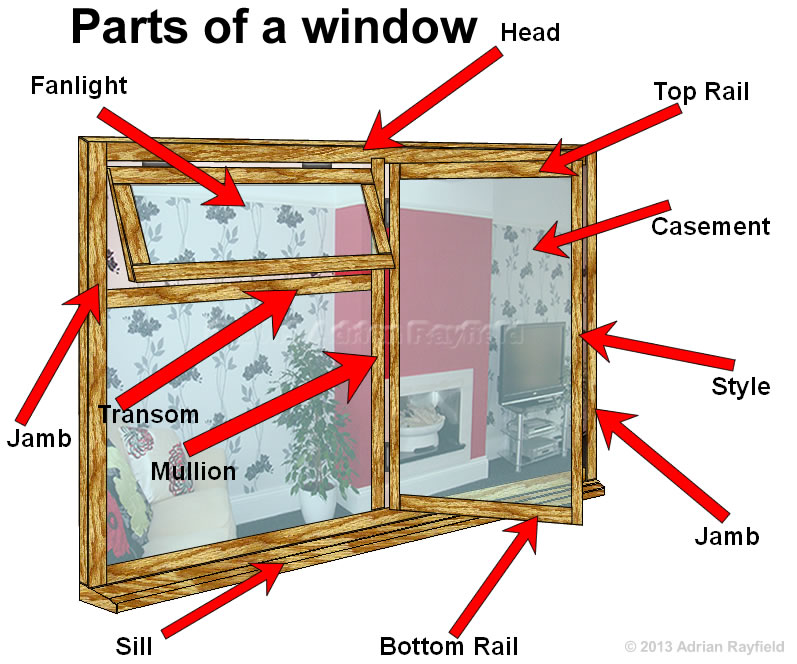Painting, decorating and home improvement tips blog
Painting Fascia boards
Posted by Adrian
October 29th, 2013
Painting Fascia boards
Painting fascia boards is an essential part of property maintenance, the fascia board is the part just under the roof and the area the guttering is screwed too. I go into more detail as to what fascia boards, soffits and bargeboards in my post Painting fascia and soffits and bargeboards.
In this post I am only talking about fascia boards, a recent job I was working on prompted me to write this post. One of the jobs on a recent exterior job I was doing was to paint the fascia boards, now this is a very typical part of a job for me so am used to preparing and painting them.
On one length of fascia board an aerial or satellite cable had been clipped to the bottom face of the board, so what’s the problem you maybe asking, well nothing except you could be shortening the life of the board. Why, you ask, well if the paint degrades behind the cable allowing water to get in you will quickly get rotten boards, the cable hold the water on the board longer as the water gets between the cable and the fascia, trapping it there far longer than if the water was allowed to run off.

So if you need to run cabling run it behind the fascia board or along the wall so you do not trap water against the fascia.
Square and round edges
Another thing to look out for are square edges on the bottom of the fascia, the paint can not cover a 90° sharp angle as you typically get on a fascia board, you may notice the paint starts to deteriate here first and may even peel and lift exposing bare wood, as described in my post How to get paint to adhere to edges of woodwork. In this situation I always rub the square edge into a slight rounded one, this will allow the paint to cover far better and last longer, so your fascia boards should last longer and it may even prolong the amount of time you need to re-paint your fascia boards.
Just a couple of tips for painting your fascia boards, but they may help the fascia and paint on them last longer.
Tags: Exterio Painting, Exterior, Exterior Wood, Fascia, Fascia Boards, Painting
Posted in Decorating Tips | Comments Off on Painting Fascia boards
Save money on paint
Posted by Adrian
September 24th, 2013

Save money on paint
In these hard times we have to save money where we can, this tip is simple but so easy to do but you will be amazed at the amount of paint you save! And another benefit to this tip is it also help the environment so your carbon footprint will be reduced too.
When you have finished painting with a roller or brush by scraping out as much paint as possible will save your money as your tin of paint will go that little bit further. Take your roller and with a scraper scrape the paint out of the roller back into the tin or paint tray, you will be amazed how much comes out, especially a thick piled roller sleave. Do this also with your paint brushes. Also, take time in removing as much paint from paint trays when your finished for the day.
Wrap it up
If you are using a roller for a job but don’t finish in a day, don’t wash your brushes or roller out, wrap them up in a bag they will stay usable overnight and you can come back to them and start work straight away and you save time as you didn’t spend ages washing out the brush or roller the night before.
Going green
The added benefit to this tip is to the environment, less paint is washed down the drain, less water is used and the paint lasts longer so you don’t have to use your car to buy more.
Saving money
If you use this tip you will be saving money, which in today’s economic climate we all need to do.
Removing paint video
Here is a quick video of paint being removed from a roller, the thicker the roller pile the more paint you should be able to recover for next time.
If you liked this post, please share it with your friends, family and colleagues via the social media buttons below. You can also subscribe to my Property Decorating YouTube channel.
Tags: Economical, Environment, Money, Paint, Paint Brush, Roller, Saving Money, Scraper, Thick piled roller
Posted in Decorating Tips, Video | 2 Comments »
Parts of a window
Posted by Adrian
August 27th, 2013
Parts of a window
You will certainly have windows in your property but there are lots of types of window styles such as, a sash window where the top and bottom windows slide up and down, or a casement window, this type of window opens outwards like a door and is very common in new houses.
Windows are also available in many types of materials such as hardwood, softwood, aluminium and Upvc to mention few. The glass may be plan or have coloured glass, lead lights or latticework to make a window more ornate.

In this post I am talking about a traditional casement window with a fanlight, however many of the terms used relate to all styles of window.
Window frame
The window frame consists of a head that runs along the top, a sill along the bottom and two jambs running vertically at either side. The frame holds the window itself either hinged as in the case of a casement window or free running as in a sash window.
Top drip
Some windows will have a top drip, this encourages the water to run off the tip of the window rather than to run down the window and glass, or even into an open window.
Casement
The casement is the part the glass sits in, the part that opens. A basic design of a casement consists of four parts, a top rail running horizontally at the top, a bottom rail that runs horizontally along the bottom and two styles that run vertically that go to make the casement. This would typically be hinged on one side or along the top and attached to the window frame.
Mullion
A mullion is the central vertical part that makes up the frame on a casement window and separates two windows, for example a opening casement window and a fixed pain window.
Transom
A transom is a horizontal part separating two windows, for example a fixed pain and a fanlight / vent window.
Window sill
The sill is at the bottom of the frame and attached to the two vertical jambs to complete the window frame, the sill will slant away from the window to encourage water to run away from the window frame, the sill will also have grove underneath it to allow the water to drip off and to stop the water running back under the window frame.
Many new windows now come with trickle vents, these are air vents that are in the head of the frame that have a grill on the outside and a closing vent on the inside, this allows air flow into the property and help prevent condensation forming on the windows.
Tags: Casement Window, Fanlight, Mullion, Sash Window, Sill, Style, Transom, Window, Window Frame, Windows
Posted in Decorating Tips | No Comments »
